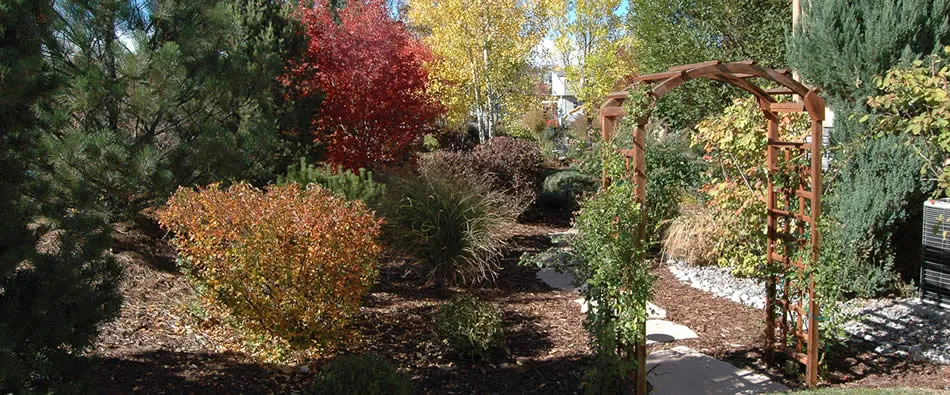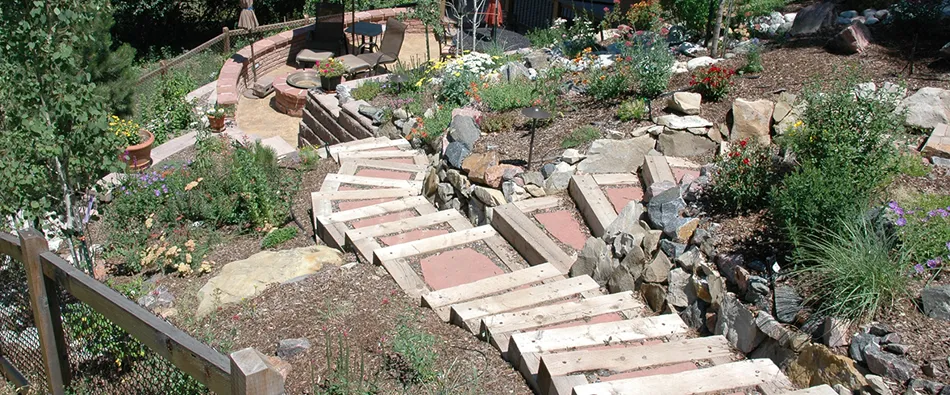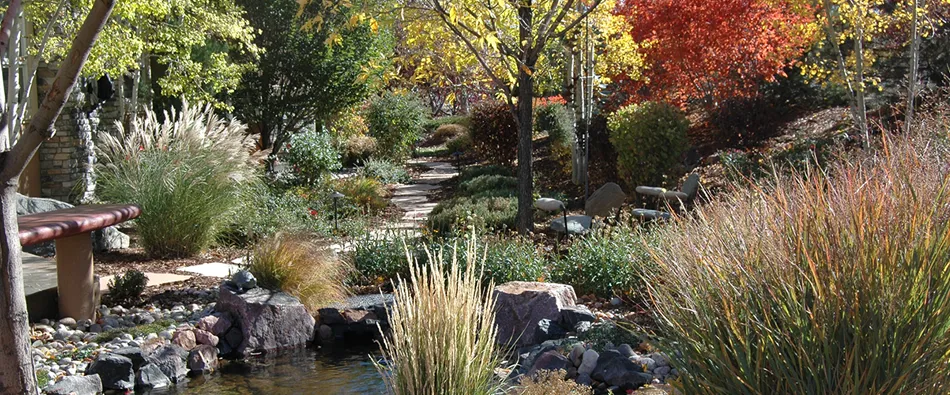Colorado's relatively warm days and cold nights, extreme temperature fluctuations and drying winds can wreak havoc with many of our commonly planted perennials.
Generally, after the first hard frost, the foliage of most perennials starts to die and wither. There are two philosophies on when to remove the dead foliage. One approach is to immediately remove the dead foliage. Many perennials will suffer no harm as a result, as long as you exercise great care when applying mulch. The other approach is waiting until spring to remove dead foliage. Always remove diseased foliage to discourage the spread of leaf-spot diseases and fungal problems.
Dehydration is a common problem when snowless winters occur. A layer of mulch several inches thick helps retain soil moisture. This mulch should be coarse and loose to permit air movement to roots. Root tissues continue to metabolize in the winter and requires oxygen for this process to take place. Reduced soil oxygen level increases the aggressiveness of many soil pathogens. Mulches which pack down should be avoided.
Watering at least monthly under dry winter conditions recharges the soil profile with moisture critical to plant survival.
Whether you decide to remove dead foliage in the fall or wait until spring, mulches provide the best protection for your perennials. Many types of mulches are available, and no matter which you choose, there are a few guidelines you should follow.
Mulches do a better job of insulating plants when space is allowed for air to circulate. Mulch that packs down to a dense mass during winter can cause mildews and molds to form. Shredded leaves from deciduous trees and pine boughs from discarded Christmas trees offer great winter protection. A good organic compost used as mulch is also effective and can be used as a soil amendment in the spring.
Established perennials and bulbs benefit from mulches that are applied after the ground freezes, because mulches don't allow soil temperatures to fluctuate as much throughout the winter.
Mulch should not be removed too early in spring or plants will begin to grow too early. Plants located on the south side of a building or wall will emerge sooner than those in other areas, but may be subject to spring frost damage. Some perennials can be damaged by drying winter winds and western sun. Fencing can be used to effectively to protect plantings.
---------------------------------------------------------------------------------------------
Xeriscape Mulches
In the high plains grasslands, dead grass and plants accumulate. These plant remains are natural mulches and are a great benefit for growing plants. They keep the soil moist and loose (increasing the soil’s ability to retain moisture), permit air and water to pass freely to plant roots, and reduce soil erosion and weeds.
Following Mother Nature’s example will provide those same benefits in a yard. A layer of mulch when xeriscaping keeps soil cooler and reduces evaporation so less water is needed. Mulches can also reduce weeds and can add color and texture to a landscape.
There are basically two kinds of mulches—organic and inorganic. In Colorado the most common organic mulches include wood chips, chunk bark, shredded bar, pine needles, lawn clippings and straw. Organic mulches gradually break down and add nutrients to the soil. They will need to be renewed periodically. Decomposition of fresh wood mulches can create nitrogen deficiencies. Be prepared to supplement the area with a fertilizer.
Inorganic mulches are stone-based and include rock, cobblestone, pea gravel, lava rock and crushed rock. They last longer than organic mulches and give landscapes a more formal look. Apply about 3” of mulch for weed control. Use less directly around the plants to allow water to reach the root area. Inorganic mulches also store and radiate heat, so avoid putting large areas of unshaded rock next to a house.
Installing sheet plastic underneath mulches is not a good idea. Air and moisture don’t permeate plastic, so plant roots don’t develop, but weeds can come through the plastic. Instead, use an air- and water- permeable landscape fabric under the mulch if an additional weed barrier is needed.
By using mulch, you’ll have a beautiful yard and save water, too.






